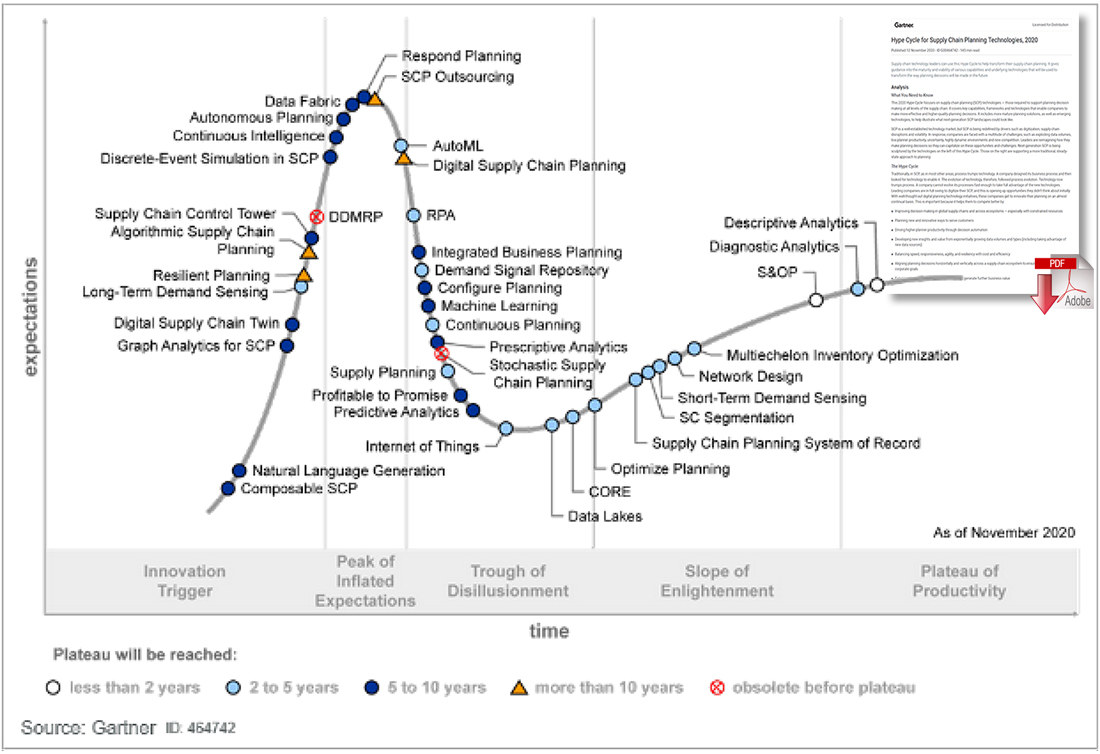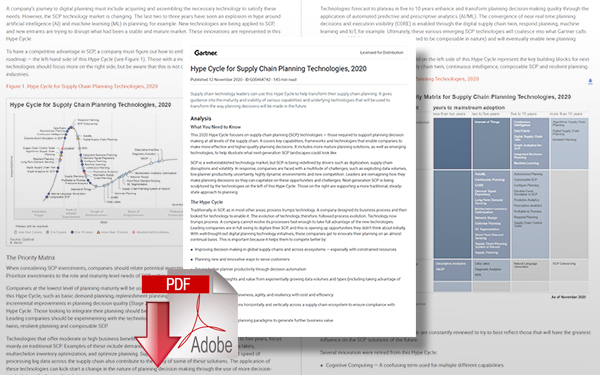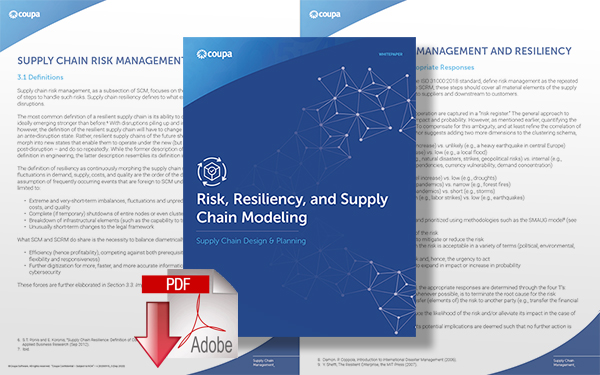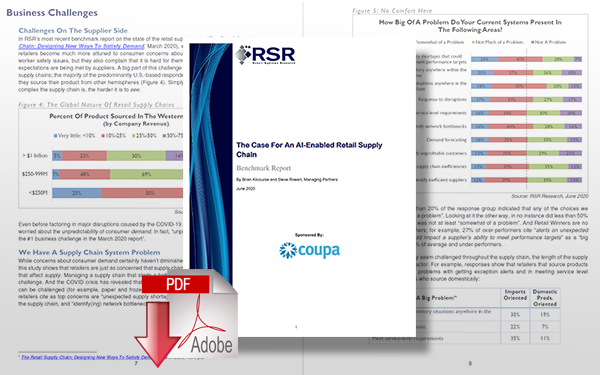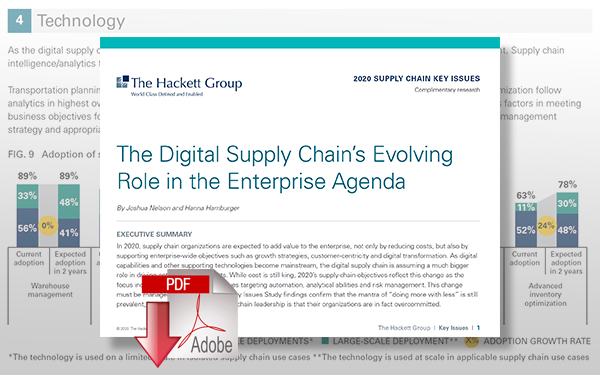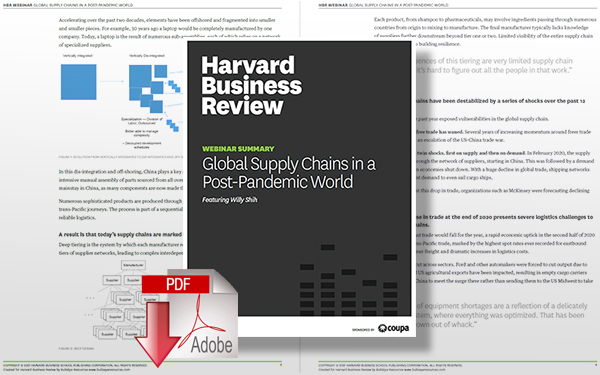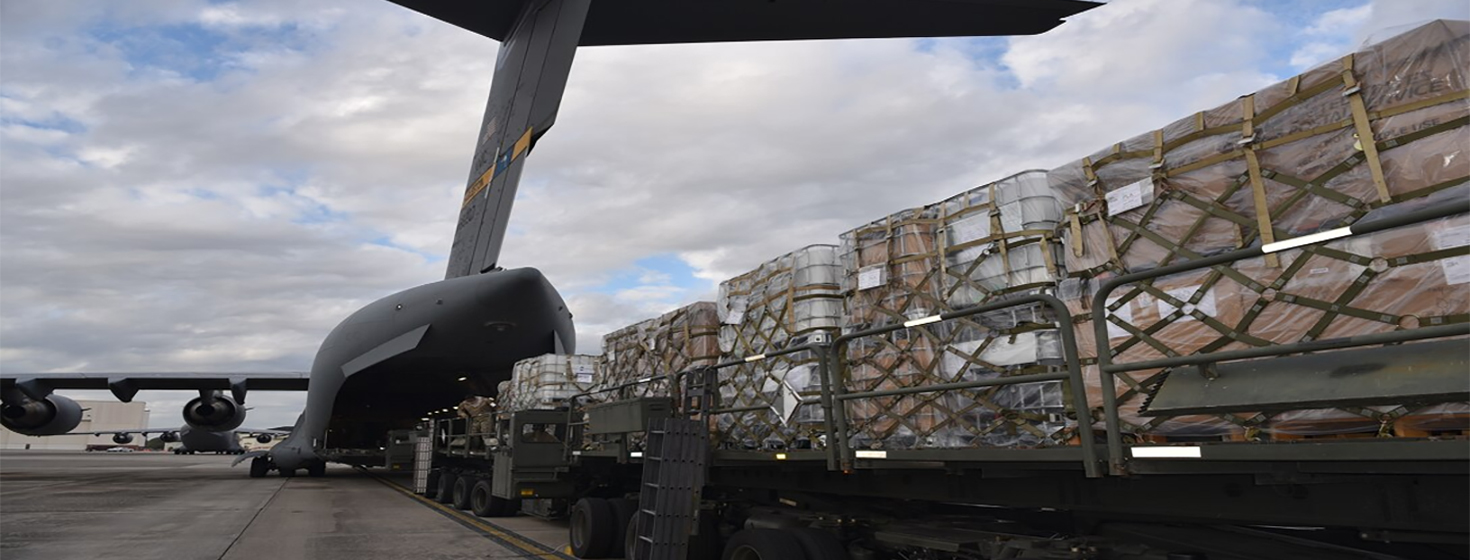4 Gartner Hype Cycle Supply Chain Technologies That Power Continuous Innovation

The Gartner Hype Cycle for Supply Chain Planning Technologies publication assesses technologies that executives should consider leveraging to stay relevant to their various stakeholders and to gain or maintain their competitive advantage in the marketplace - in this article we detail 4 technologies supporting supply chain planning innovation.
Supply Chains Are Not Stagnant
If we have learned anything new about supply chains this past year, it’s that they are not stagnant.
Instead, they are living, breathing ecosystems that require constant evolution to remain relevant to the internal and external customers they serve.
As a result, it is imperative that leaders continuously innovate their supply chains by investing in new technologies.
So, Where Do You Start Your Supply Chain Journey?
One of the most recognized resources that supply chain leaders reference is the Gartner Hype Cycle for Supply Chain Planning Technologies. This publication assesses technologies that executives should consider leveraging to stay relevant to their various stakeholders and to gain or maintain their competitive advantage in the marketplace.
“Technology now trumps process. With well-thought digital planning and the right tools, companies can continually innovate their planning.” - Gartner
From Innovation to Standard Productivity Practice
The classic approach of designing processes and then searching for technologies to support them is obsolete. Technology now trumps process.
Let me state that again - technology now trumps process.
Take a deep breath and sit with that for a moment. That statement most likely caused you to experience a bit of cognitive dissonance, which is the point. ERP vendors have often stated you should not implement their solutions without performing widespread process reengineering. A technology deployed that does not fundamentally change how you operate does not move the needle forward concerning performance.
Just why does technology trump process?
The answer is simple. Companies can no longer evolve their processes fast enough to take advantage of new technologies. They must now seek new opportunities to accelerate the value that their supply chains deliver. To accomplish that, leaders need to apply new technologies to the foundation they already have in place.
With 25 years dedicated to the supply chain discipline, I view adopting new technologies within your supply chain as analogous to bolting a turbocharger to an engine. You leverage the investments you have already made by adding on new technologies that radically increase performance without disrupting the entire operation. After the installation, when you need the performance boost, it kicks in seamlessly on-demand. As with race cars, early adopters gained numerous advantages that allowed them to beat their competitors, that is, until they became commonplace.
The time to take action is now so that you can gain a “first-mover” advantage in your respective markets. Increasingly, the ability of the supply chain to deliver becomes the competitive advantage!
Gartner Hype Cycle for Supply Chain Planning Technologies 2020
Next-generation Supply Chain Planning (SCP) is being sculptured by the technologies on the left of this Hype Cycle. Those on the right are supporting a more traditional, steady-state approach to planning. [This graphic was published by Gartner, Inc. as part of a larger research document and should be evaluated in the context of the entire document. The Gartner document is available upon request from Coupa Software.]
4 Technologies Supporting SCP Continuous Innovation
For most organizations, the standard practice for supply chain design was to hire a consultancy to build a baseline model of their supply chain in network modeling software. Solvers would then be employed to identify an optimal supply chain. Most of the time that plan was only partially implemented before moving on to other fire-fighting projects as they needed to urgently address unforeseen changes. Three to four years later the cycle repeated.
That's a slow, incremental model that can't keep pace in today's fast-paced environment. We are now moving from an episodic to a continuous design process.
We believe that four technologies in the hype cycle are especially adept at enabling companies to successfully transition from a steady-state supply chain to one that continuously evolves and adapts to changes taking place at an exponential pace.
1. Digital Supply Chain Twin (Innovation Trigger)
The pandemic has underlined the importance and value of the digital supply chain twin. With it, organizations can test out a litany of “what-if” scenarios to determine the best options to respond to changing market conditions and disruptions that even the best plans did not consider. A digital twin enables an agile supply chain and lets an organization know, in a matter of hours, the potential impacts that any proposed options would have on any number of given bottlenecks or constraints, whether they are fixed or temporary.
2. Long-Term Demand Sensing (Innovation Trigger)
What you sold yesterday is increasingly less relevant to what, where, and how much you will sell five years from now. If you rely solely on your past sales history, a library of mathematical algorithms, and a bit of “gut feel” to make this prediction, then you are already behind the eight ball. You need to incorporate relevant socio-economic trends that serve as causals that inherently determine your demand curves. Long-term demand sensing combines internal sales history with external data and machine learning to support integrated business planning and predict future trending demand over a two to five-year time horizon.
3. CORE (Configure, Optimize, Respond) (Trough of Enlightenment)
Think of this as the instructions for building out your supply chain, similar to building a race car.
- Configure: Purposely build out your supply chain as you grow. Build new plants, use new warehouses, sell into new markets, and make acquisitions as you serve your customers. Then “drive” that supply chain to deliver the results that you built it to achieve.
- Optimize: Use your digital supply chain twin to conduct a series of “what-if” analyses to determine which parts of your supply chain are holding back your performance. Maybe substitute one warehouse for another, intermodal for over-the-road, augment manufacturing with an external toller, or turn on additional suppliers. If your engine is not getting enough gas, then swap out the fuel pump to a larger one to handle the engine’s increased demands. Get creative, think differently, and test out your ideas in a simulation before you go live.
- Respond: Even the best-laid plans sometimes need adjustment due to unforeseen circumstances - like a global pandemic. Check on the supply chain regularly and replan in the short-term to achieve the desired results. If the race car’s tires are wearing out too quickly on the outside edges, increase the camber angle. Possibly even swap tires during a 14-second pit stop.
4. Multi-Echelon Inventory Optimization (Slope of Enlightenment)
Although multi-echelon inventory optimization is considered a more mature technology, an overwhelming majority of companies that I interface with have not yet utilized this capability. By incorporating demand variability, replenishment cycle times, and desired customer fill rates, organizations can set the correct inventory levels to ensure they're making the best use of constraint working capital budgets. Take this approach further by adding inventory valuation classes (raw materials, intermediates, finished goods) and optionality for stocking locations closer to customers, plants, and suppliers. You then have an optimization problem that no spreadsheet can handle. Let your competition struggle with spreadsheets while you embrace an algorithmic solution that feeds the optimal results back into your ERP system for execution. Think of this much like having a performance car “tuned” where new operating instructions are loaded into the powertrain control module that serves as the vehicle's brain. That “tune” can be easily changed based on the desired driving characteristics, much like inventory settings in your ERP system.
The Continuous Cycle of Innovation
At one point in time, everything on the Gartner Hype Cycle was new before it moved to the plateau of productivity and became a standard practice. To develop a competitive advantage in supply chain planning, a company must figure out how to embrace innovations in their supply chain road map. Organizations can evaluate these technologies with a priority matrix that relates potential investments to their overall supply chain strategy.
Things like digital supply chain twin, machine learning, and continuous intelligence will be standard technologies in the supply chain within ten years, just like the turbocharger is in many high-volume production cars today. You now have a window of opportunity to embrace these technologies and stay ahead of the competition by making your supply chain a competitive advantage.
Download and read the Gartner Hype Cycle for Supply Chain Planning Technologies to learn more. Gartner, Hype Cycle for Supply Chain Planning Technologies, 2020, Tim Payne, Amber Salley, Pia Orup Lund, 12 November 2020
Disclaimer: Gartner does not endorse any vendor, product or service depicted in its research publications and does not advise technology users to select only those vendors with the highest ratings or other designation. Gartner research publications consist of the opinions of Gartner’s research organization and should not be construed as statements of fact. Gartner disclaims all warranties, expressed or implied, with respect to this research, including any warranties of merchantability or fitness for a particular purpose.
Related Resource
Gartner Hype Cycle for Supply Chain Planning Technologies, 2020
According to Gartner, “SCP (supply chain planning) is a well-established technology market, but SCP is being redefined by drivers such as digitization, supply chain disruptions and volatility.” Download Now!
Risk, Resiliency, and Supply Chain Modeling
This paper first examines why existing supply chain management practices do not naturally develop resilient supply chains and why some of the existing supply chain processes are not suitable for addressing such risks and required responses. Download Now!
The Case for an AI-Enabled Retail Supply Chain
In this benchmark report from Retail Systems Research, we look at the response and key finding from retailers who show an interest in adapting and using artificial intelligence, AI analytics to enable a more agile supply chain. Download Now!
Digital Supply Chain’s Evolving Role in the Enterprise Agenda
The Hackett Group 2020 Key Issues Study findings confirm that the mantra of “doing more with less” is still prevalent, but the top concern of supply chain leadership is that their organizations are in fact overcommitted, AI analytics to enable a more agile supply chain. Download Now!
Global Supply Chains in a Post-Pandemic World
In this webinar summary, Willy Shih, Robert and Jane Cizik Professor of Management Practice in Business Administration at Harvard Business School, shares insights into how global supply chains came to be the way they are and how their vulnerability has been revealed through numerous crises. Download Now!
More Resources from Coupa
Related Article: Demand Planning, AI, and Agile Decision Making, Solves Anticipated Cargo Demand
Article Topics
Coupa News & Resources
How Microsoft Improved ESG & Sustainable Spending Working Together with Community.ai Capabilities Supply Chain Agility in an Ever-Changing World How Sourcing Can Respond in Dynamic Markets to Drive Supply Chain Value Build Resilience in Supply Chains by Modeling & Designing Multiple Demand Futures Beyond Disruptions: Building the Next Generation of Resilient Supply Chains 6 Truths About Business Spend Management Technology 5 Ways Supply Chains Can Flourish in an Inflationary World More CoupaLatest in Supply Chain
Walmart Unleashes Autonomous Lift Trucks at Four High-Tech DCs Ranking the Best Countries for Private Business in EMEA Frictionless Videocast: The Importance of Water at the U.S./Mexico Border with Commissioner Maria-Elena Giner, International Boundary and Water Commission Why are Diesel Prices Climbing Back Over $4 a Gallon? Plastic Pollution is a Problem Many Companies are Still Ignoring Luxury Car Brands in Limbo After Chinese Company Violates Labor Laws 80% of Companies Still Unsure How to Best Leverage AI, Study Finds More Supply Chain

